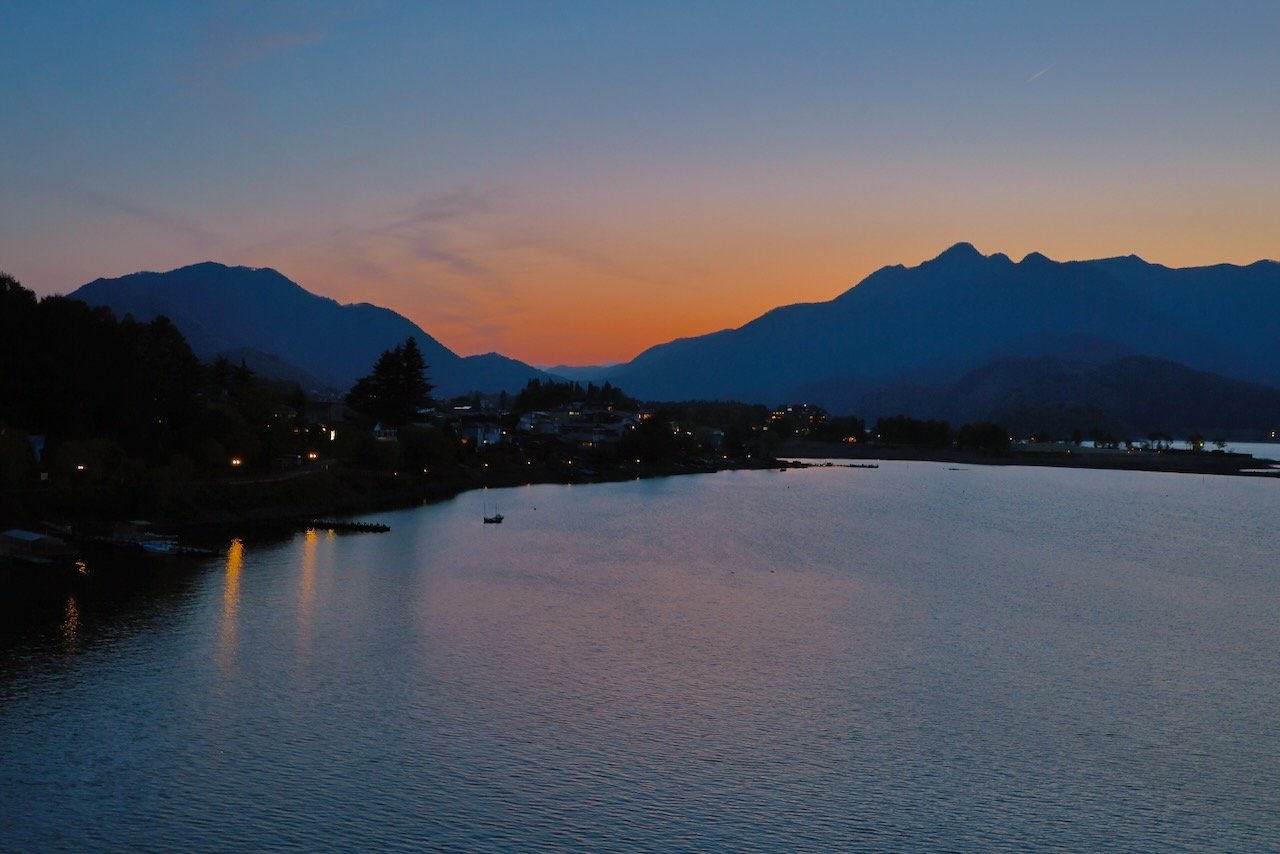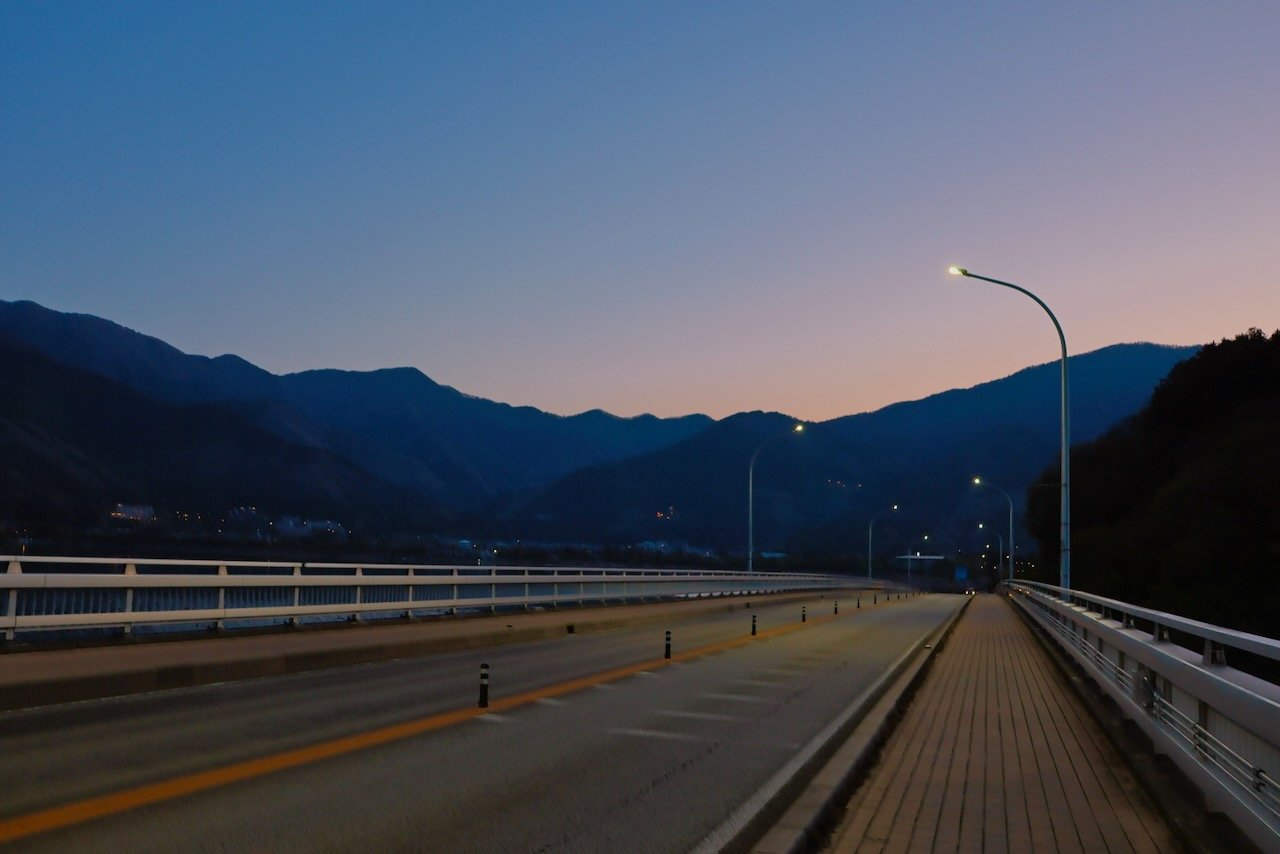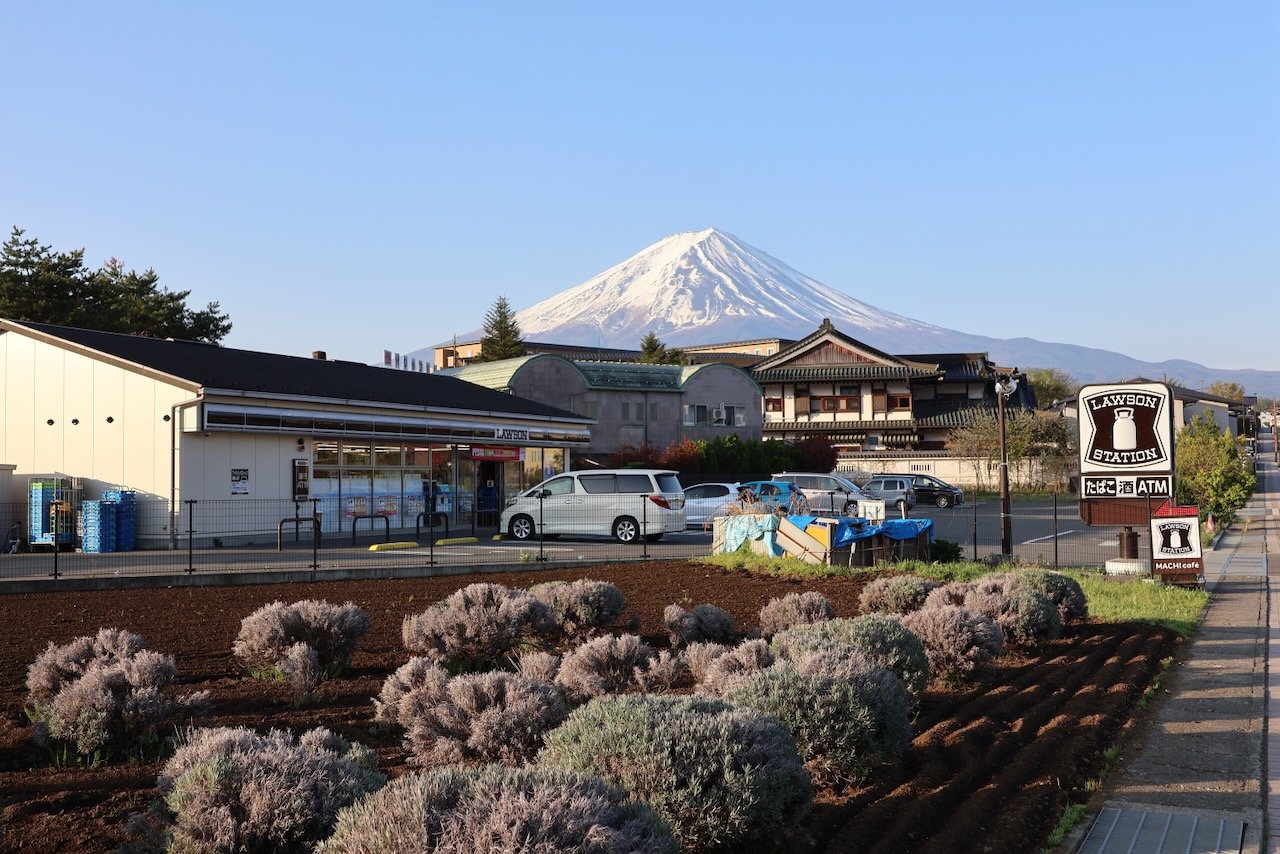Japan | Fujikawaguchiko & Re-arrival in Tokyo (Days 11-12)
Day 1
Getting to the small, serene little lakeside town of Fujikawaguchiko took multiple trains and nearly five hours — but it was absolutely worth it. Our final leg was on comically small, low-tech line compared to the sleek Shinkansen trains we'd taken before, but it offered incredible views of the majestic Mount Fuji the whole way up. I raced to the windows near the front of the train and positioned my camera to try and get some snaps of the countryside against this soaring, snow-capped peak.
After arriving at our second ryokan inn (complete with futons on the floor but, mercifully, our own bathrooms), I took a brief walk along the lake shore up to a bridge to get our first real look at the mountain. After a quick dinner, I ran back up again in hopes of catching a sunset photo – a little too late to get the full colors, but still quite pretty in the evening light. I resolved to get up early the next morning to catch it at sunrise, trying to make the very most of the brief time we had in this small town.
Day 2
I managed to wake up before my alarm at 3:30AM and walked to the bridge in the dark along the quiet streets, bundled against the chill to catch the 4:40AM sunrise over the lake with Asya and one other person from our group. As the morning light grew, more people joined on the bridge and the nearby shore with their cameras at the ready. Watching the sky shift slowly from night to morning, revealing Mount Fuji in perfect cloudless clarity, was something special and felt incredibly peaceful. We even spotted a Black Kite perched dramatically on a streetlamp, seeming to take in the view along with us.
By the time the sun rose, our hands were frozen solid. To warm up, we stopped by perhaps the most scenic Lawson’s convenience store ever – boasting stellar Mt. Fuji views – to grab something warm and caffeinated before heading out again.
Re-energized and not eager to go back to the hotel, Asya and I hatched a plan to try and visit the famous Chureito Pagoda overlooking the mountain, which was only about an hour away. However, in our haste to set off, we accidentally caught the wrong bus and ended up at a totally different shrine called Asama, which was tucked into a cedar forest off the main road. It wasn’t a bad detour at all — the shrine was stunning, with a few people offering prayers among the towering trees. Asama shrines are dedicated to the goddess of Mt. Fuji and all volcanoes in Japanese mythology – and there are over 1000 of them within view of the mountain. This particular shrine holds seven 1200-year-old cedars within the grounds, which were deified with shimenawa ropes around them – signifying them as a sacred space within Shinto religion. One tree pair caught my attention — two massive cedars that seemed to be growing from the same trunk. This one was known as “Futahashira” , the cedar of marriage, and people prayed to it in hopes of a relationship that was as strong, solid, and everlasting as these two trees.
Eventually, we got ourselves back on track, and managed to figure out that we needed to take a train to get to the Chureito Pagoda. From there, it was a 400-step climb to the top to appreciate the pretty structure – which was built in 1963 overlooking a very old shrine as a peace memorial. When we arrived, Fuji’s peak was just barely hidden behind a tuft of clouds. We watched and waited alongside the crowd to see if the peak would be visible. We were eventually rewarded for our patience when the clouds thinned and we got a very brief glimpse of the peak again.
After realizing that the trains only came once per hour, we rushed down the stairs again and just made it in time to make our way back into town. This morning’s adventures had left me with a craving for pancakes, so we ducked into a small cafe called Cafetino — where I enjoyed a very fluffy and delicious matcha pancake.
From there, we were headed to our final stop: back to Tokyo – and, unfortunately, right into the chaos of the post-work rush hour. Wrangling our bags through the throng was not the most relaxing, and after such an early start, I definitely felt my energy flagging. Nevertheless, I rallied for our final dinner as a full group that evening at a nearby spot called Monja Kurya that served Monjayaki – a signature Tokyo specialty that I’d never heard of before. It’s a gooey, savory thin batter (flour + dashi broth + water) that is cooked on a teppan with cabbage and various other ingredients — ours had small dots of mochi that melted into the batter, cheese, and salmon. Bizarre-sounding, I know – and it’s not exactly the most visually appealing dish I’ve ever seen – but I can promise you, it was delicious and very unique. Alongside this main attraction, Asya, another person from our group, and I split the restaurant’s recommended course menu to try as many things as possible, which ended up being... a lot of food grilled on the teppan in front of us. As we realized with slightly mounting panic that even more courses were coming (all of which were amazing) , we had to start begging our tablemates to help us finish the last few rounds. We left the restaurant full, happy, and smelling decidedly of cooking oil and smoke from the teppan grills.



























